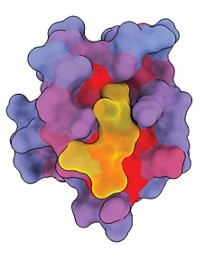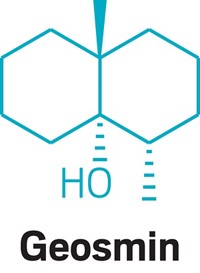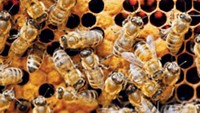Advertisement
Grab your lab coat. Let's get started
Welcome!
Welcome!
Create an account below to get 6 C&EN articles per month, receive newsletters and more - all free.
It seems this is your first time logging in online. Please enter the following information to continue.
As an ACS member you automatically get access to this site. All we need is few more details to create your reading experience.
Not you? Sign in with a different account.
Not you? Sign in with a different account.
ERROR 1
ERROR 1
ERROR 2
ERROR 2
ERROR 2
ERROR 2
ERROR 2
Password and Confirm password must match.
If you have an ACS member number, please enter it here so we can link this account to your membership. (optional)
ERROR 2
ACS values your privacy. By submitting your information, you are gaining access to C&EN and subscribing to our weekly newsletter. We use the information you provide to make your reading experience better, and we will never sell your data to third party members.
Biological Chemistry
Mass Spectrometry Method Provides Insights Into Insecticide Resistance
Analytics: With the technique, researchers explain the connection between a fruit fly gene and resistance to a neonicotinoid insecticide
by Sarah Webb
March 24, 2014

When pests gain resistance to insecticides, they can threaten food crops across the globe. But researchers have struggled to understand some of the mechanisms insect cells use to withstand these chemicals, which makes it difficult for scientists to design ways to combat resistance. Now, using a mass spectrometry technique, researchers in Australia have explained how fruit flies express a single gene at high levels to rid themselves of a common insecticide (Anal. Chem. 2014, DOI: 10.1021/ac404188g).
One way insects thwart insecticides is through a process called metabolic resistance, says Philip Batterham of the University of Melbourne, in Australia. The bugs’ cells develop chemical pathways that break down the insecticide and prevent it from causing harm.
Previously, researchers tracked the metabolism of insecticides using compounds labeled with carbon-14. But the slow decay of carbon-14 means that scientists might follow these experiments for weeks to months to get a detectable signal within the insect tissues. Batterham, a biologist, along with chemists Richard A. J. O’Hair and William A. Donald, thought that combining mass spectrometry with labeled insecticides might provide a faster, more sensitive solution to the problem.
The method is called twin ion mass spectrometry, and pharmacologists have previously used the technique to track the metabolism of brominated drugs. To monitor metabolism of an insecticide, researchers expose the insects to an unlabeled chemical and one labeled with carbon-13. Then, when the researchers analyze molecules in samples from the insects via mass spectrometry, the metabolites of the insecticide show up as pairs of ions, or twins: one that’s labeled and another that’s unlabeled.
The Australian team fed a nonlethal dose of a mix of unlabeled and carbon-13-labeled imidacloprid to fruit fly larvae. Imidacloprid is a commonly used neonicotinoid insecticide that has been implicated in colony collapse disorder in honeybees. After six hours, they separated out the insects’ excretions, crushed the bugs, and analyzed them for metabolites. Even with samples from a single insect, they could identify metabolites of the insecticide.
The method helped them to piece together how the insects resist imidacloprid. Batterham and his colleagues had previously discovered that a single gene was responsible for metabolic resistance to many insecticides, including DDT and imidacloprid, when expressed at high levels in the bugs (Science 2002, DOI: 10.1126/science.1074170). The results seemed contradictory because the gene codes for an enzyme that breaks down imidacloprid into smaller, but more toxic, compounds. With this new technique, the team could follow the chemicals’ fates through different fly strains with varying expression levels of the enzyme. They found that the more toxic metabolites were also easier for insects to excrete, which prevents the chemicals from reaching the brain where they cause harm.
The technique allowed the researchers to demonstrate a causal link between the overexpression of one gene and insecticide resistance, says Xianchun Li of the University of Arizona, Tucson. Previously researchers didn’t have enough direct evidence to link the two, he says.
Batterham says his team next would like to look at where these reactions occur within fruit flies and examine how insecticides interact with resistance genes that occur in other pest insects.





Join the conversation
Contact the reporter
Submit a Letter to the Editor for publication
Engage with us on Twitter